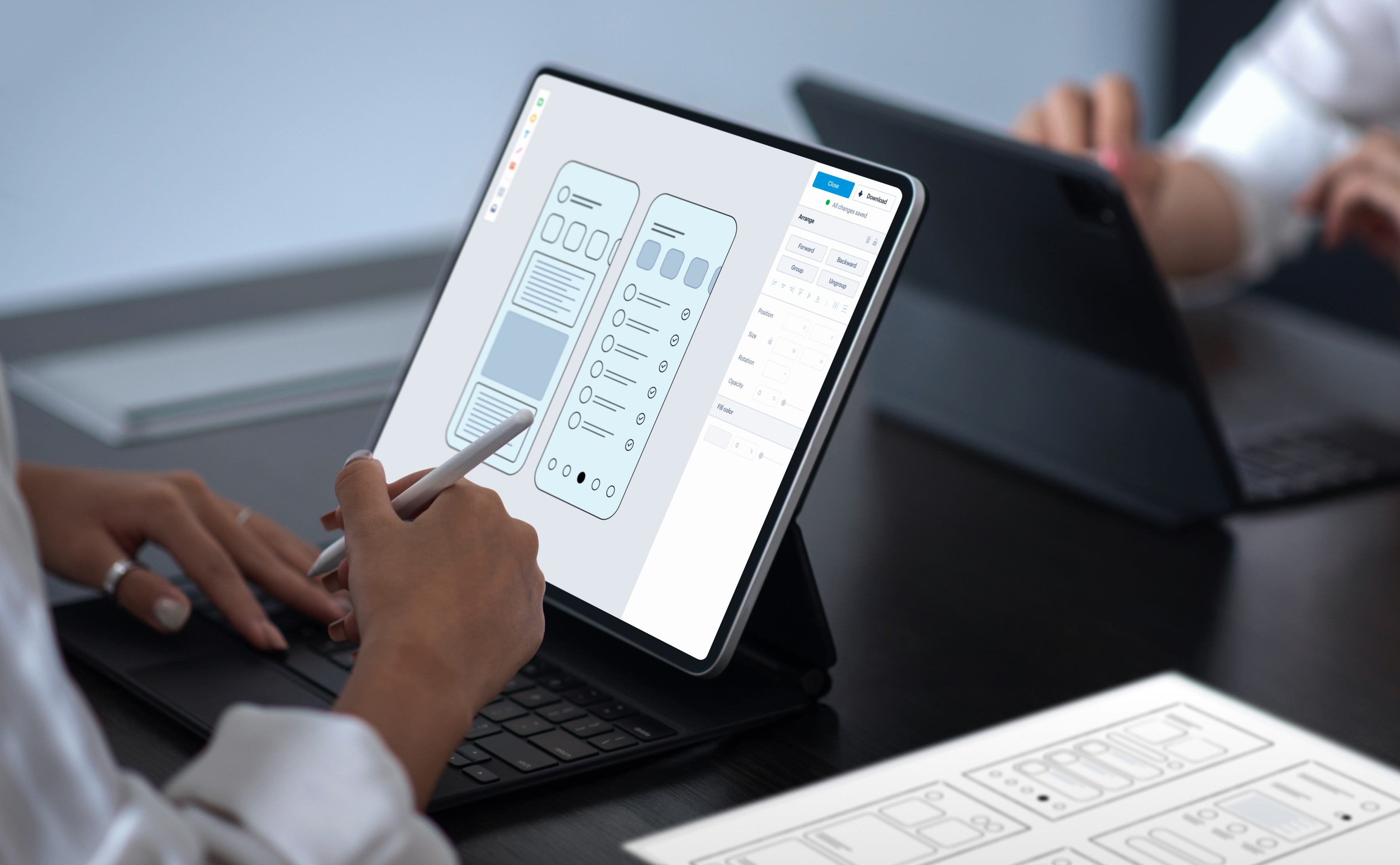Laravel Microservices: Benefits, Steps & Best Practices
Listen to this article

- Understanding Laravel Microservices Architecture
- Advantages of Laravel Microservices
- When to Consider Laravel Microservices
- Microservices Framework Using Laravel
- Steps to Build Microservices in Laravel
- Best Practices for Deploying Laravel Microservices
- Challenges in Using Laravel Microservices
- Bottom Line
- Understanding Laravel Microservices Architecture
- Advantages of Laravel Microservices
- When to Consider Laravel Microservices
- Microservices Framework Using Laravel
- Steps to Build Microservices in Laravel
- Best Practices for Deploying Laravel Microservices
- Challenges in Using Laravel Microservices
- Bottom Line
At first glance, monolithic systems could seem simple, but they may soon run into issues with deployment, scalability, and customization. That's where microservices help. Microservices break down applications into smaller, independent services, each of which can be deployed, used, and scaled on its own, providing a comprehensive solution for today’s dynamic needs. According to industry research, 77% of businesses have implemented microservices, with 92% experiencing positive outcomes. Since more and more companies are embracing microservices, it's clear that they offer a reliable way of managing complex applications across industries. If you're thinking about building your application with a microservices architecture, Laravel is a great choice. Its flexibility, rich ecosystem, and developer-friendly tools make it easy to create and scale microservices effectively. More than 56,000 developers are using Laravel across the globe. Its refined syntax and robust features have resulted in its popularity among developers building the latest web applications. Microservices with Laravel allow organizations to develop applications that are not only full of features but also scalable and flexible. This article explores their architecture, key benefits, real-world use cases, and best practices for implementation, highlighting why Laravel remains a go-to choice for scalable business applications.
Understanding Laravel Microservices Architecture
Laravel provides a robust and developer-friendly foundation for building microservices. With features like middleware, routing, and service providers, Laravel's modular design makes it simple to create small, standalone services that complement one another. Since each service runs on its own but can still connect with others, it’s easier to build apps that can grow and are simple to manage.
Cloud-native apps, serverless computing, and containerization with Docker and Kubernetes are some of the emerging trends that make it easier to deploy and maintain Laravel microservices with better and more scalable business solutions.
Advantages of Laravel Microservices
Adopting a microservices architecture with Laravel brings a host of benefits that enhance scalability, maintainability, and flexibility. Here’s how it can transform application development:
1. Independent Deployment
Every microservice runs independently. Thus, the teams can implement changes or updates without impacting the program as a whole. This results in shorter downtime and quicker release cycles.
2. Strong Module Boundaries for Better Resilience
Microservices make sure that modules are separated, so if one service fails, it doesn't affect the whole system. This makes apps more resilient and reliable.
3. Simplified Upgrades & Maintenance
With Laravel microservices, it's easier to update or change a specific service because changes are made locally. This lowers the risks and makes it easier to do regular upkeep.
4. Freedom to Use Different Technologies
With microservices, teams have the flexibility to choose the best tools for each service according to its specific requirements. gRPC integration with Laravel requires additional configuration or third-party packages, while REST (via JSON over HTTP) is natively supported.
5. Compatibility with Multiple Programming Languages
Laravel microservices communicate with each other easily through APIs, which is complicated in traditional monolithic apps. Because of this, businesses can use different computer languages without having to worry about whether they will work together.
6. Faster Development and Increased Agility
Development teams can collaborate by dividing an application into microservices. This facilitates quicker market adaptations and speeds up the development process.
7. Improved Maintainability for Long-Term Efficiency
Since microservices are independently managed, debugging and troubleshooting become easier. Developers can isolate issues within a specific service without impacting the entire application.
8. Enhanced Scalability for Growing Businesses
Scaling individual microservices based on demand optimizes resource usage. Businesses can allocate computing power precisely where needed without overloading the entire system.
9. Better Fault Tolerance and Reliability
If one microservice fails, it does not bring down the entire application. Because it has built-in fault tolerance, the rest of the system can keep working normally.
10. Flexible Technology Stack for Future-Proof Solutions
Laravel microservices allow businesses to evolve their technology stack without disrupting existing functionalities. This adaptability ensures long-term sustainability and innovation.
By leveraging Laravel microservices, businesses can build robust, future-ready applications that enhance performance and user experience.
When to Consider Laravel Microservices
Taking on a microservices architecture with Laravel is especially beneficial in some important scenarios. Companies need to adopt this approach when their applications have scalability issues, are excessively complex, or require modular development. Here are the main scenarios where Laravel microservices would be useful:
1. Large and Complex Applications
When working with feature-rich and multi-functional applications, a monolithic architecture can prove to be challenging to manage, scale, and update. In such a scenario, Laravel microservices assist in decomposing the system into independent, self-contained services, each handling a particular functionality.
Laravel Microservices Example Use Case:
- A multi-module e-commerce site, such as a product catalog, user authentication, order management, and payment processing, can benefit from microservices.
- Each microservice exists independently, so developers can readily update, scale, and debug features without impacting the entire application.
2. High-traffic or Growth Potential
Applications with high user loads or expecting future expansion need a scalable architecture to provide the best performance and flexibility. Monolithic architectures can have a tough time when it comes to scaling. On the other hand, microservices offer the flexibility to scale each service independently based on demand.
Laravel Microservices Example Use Case:
- A Laravel-driven video streaming site needs to scale its video processing and delivery service separately from other parts of the application, such as authentication or user profile management.
- With microservices, only the video streaming service can be scaled up, optimizing resource utilization and reducing server costs.
3. Frequent Updates and Deployments
Companies that are required to keep updating features regularly or deploying new functionalities can enjoy microservices. When you're working with a monolithic app, making even a small change means you have to redeploy the entire thing. On the other hand, with microservices, you can adjust each one separately and implement changes way more quickly.
Laravel Microservices Example Use Case:
- A social media platform that continues unveiling features like live streaming, polls, or reactions can refresh them without interfering with existing features like messaging or notifications.
4. Divergent Sets of Skills Within Development Teams
Various teams possess skills in different programming tools and languages. In a monolithic Laravel application, they mostly stick to writing in PHP. However, through the use of microservices, each team uses technology suitable for their domain of the project.
Laravel Microservices Example Use Case:
- A SaaS application that offers both AI-based analytics and user management can require Python for AI models and PHP (Laravel) for user authentication.
- With microservices, the AI module can be executed in Python, while Laravel takes care of authentication to ensure maximum performance and efficiency.
Microservices Framework Using Laravel
Laravel offers a solid and user-friendly base for creating microservices. Thanks to its modular design and built-in features like routing, middleware, and service providers, you can easily craft services that are loosely connected and can be deployed independently. Moreover, because of Laravel's flexibility, the microservices strategy works well. As each service is treated as a stand-alone module, using Laravel, scalable and easily maintainable apps can be developed.
Ready to scale your application with Laravel microservices?
Let's talkLoading...
Steps to Build Microservices in Laravel
To make sure that building microservices in Laravel is efficient, scalable, and easy to manage, you need to plan and carry out your work very carefully. Here is a list of the main steps that need to be taken:
1. Start a Lightweight Laravel-based Service.
Laravel offers everything you need to build lightweight, high-performance services. With its modular design and API-friendly features, Laravel makes it easy to create lean microservices without added complexity. When you use the right framework, you get better speed and easier deployment.
2. Create Separate Databases
In the microservices architecture, it's generally recommended that each service have its own dedicated database. Having separate databases for each microservice prevents most issues with shared databases and maintains the services in independent isolation. With this, every service has the capability to scale independently.
3. Establish Clear API Endpoints
Microservices mostly communicate through APIs; hence, routes and controllers correctly described have to be developed for every service. These are the paths that guide microservices in responding to demands in a way that enables effective communication among themselves. Following GraphQL or RESTful API standards, front-end applications, as well as other back-end services, can collaborate more effectively.
4. Structure Data with Models and Migrations
Data modeling for every microservice is important for maintaining clean and neat data management. Migrations allow database schema changes to be handled seamlessly so that services are easily modified without rendering the current functionality obsolete. Having structured models and migrations ensures teams achieve better data consistency and maintainability in the long term.
5. Populate Data and Validate Functionality
Before microservices are implemented, they must be tested thoroughly to identify and resolve any issues that may arise and ensure they function without issues. Database seeding allows test data to be inserted into tables to ensure they resemble real-world scenarios. Performance testing, API testing, and functionality testing ensure that the solution is functional and that all of the microservices interact with each other correctly in the final system. It is critically important to find and fix bugs ahead of time so that the release is glitch-free and operations are at their best.
Through such steps, firms can successfully model and deploy scalable, secure, and maintainable Laravel-based microservices.
Best Practices for Deploying Laravel Microservices
Laravel microservices need a well-planned approach to ensure maintainability, scalability, and performance when implementing a microservices architecture in Laravel. Some of the best practices to use while designing Laravel microservices include:
1. Independent Microservices
Each microservice should be self-contained, meaning it must have its own logic, database, and dependencies.
Key Tips:
- Don’t use the same database for all services. This will keep things more flexible.
- Keep each service focused on one task, like user accounts, payments, or notifications.
- Use domain-driven design (DDD) to architect microservices from particular business domains so that everything stays organized and easy to manage.
Example:
A banking app can divide its key functions, like account management, transaction handling, and fraud detection, into independent microservices. As each service runs on its own and can be updated or scaled without affecting the others, this ultimately improves the reliability and system performance.
2. Using API Gateways
An API gateway is one point for clients where it receives requests, offers security, and routes the requests to multiple microservices. It simplifies client-side interactions and provides greater security.
Key Advantages:
- It simplifies things by having one endpoint rather than an array of service URLs.
- It performs authentication in the middle, safeguarding requests before they reach the services.
- Enforces rate-limiting, caching, and request validation to enhance performance.
Example:
A shopping website can make great use of an API Gateway to route product searches to the catalog service, handle user authentication through the identity service, and process payments via the payment service.
3. Implementing Service Discovery
Hardcoding service URLs can render your system brittle and rigid. It is better to use the service discovery mechanisms, which enable you to locate and communicate with microservices.
Approaches:
• Client-side discovery: Services use a discovery registry (e.g., Consul, Eureka, etc.) to find available services.
• Server-side discovery: The API Gateway discovers services automatically and establishes connections with them on behalf of the server.
Example:
If the order part of the app needs to communicate with the payment part, it should not use a hard-coded address (such as a specific link or IP to a website). Rather, it should query a service registry, which maintains where all the services are. In this way, even if the payment service changes or moves, the order service will be able to locate it without issues. It makes the system more flexible and easier to manage.
4. Asynchronous Communication
Microservices may communicate asynchronously whenever possible to provide quick responses and scalability. This prevents blocking latency delays and facilitates event-driven architectures.
Best Practices:
- Laravel’s built-in queue system (powered by Redis, Amazon SQS, or others) can be extended to support message brokers like RabbitMQ or Kafka when asynchronous communication across services is required.
- Create event-driven systems by utilizing Laravel Events and Listeners to invoke action without direct calls between services.
- Employ WebSockets or Server-Sent Events (SSEs) to provide real-time updates.
Example:
In a ride-hailing application, when a driver has accepted a ride, the notification service must asynchronously send an update to the user so that the booking service is not blocked.
Looking to implement Laravel microservices?
Reach out to usLoading...
Challenges in Using Laravel Microservices
Microservices do have numerous advantages, but also a few difficulties:
- Deployment Difficulty: There are more services requiring solid deployment procedures and tools to address the additional complexity.
- Increased Overhead: Each microservice introduces additional resource usage and operational complexity, requiring careful management. But this overhead is usually justified because of the improved scalability and flexibility that it offers to the entire architecture.
- Debugging Complexity: Finding problems across multiple microservices can be quite a challenge. However, using third-party tools for monitoring and logging helps bring all that service data together in one place, making it much simpler to spot and resolve issues.
- Data Inconsistencies: It takes careful planning and good data management techniques to make sure that data stays the same across different services.
Bottom Line
Leveraging Laravel for microservices development empowers businesses to create scalable, maintainable, and modular applications. Using a microservices design can help organizations become more agile, react quickly to market developments, and provide seamless user experiences.
To truly harness these benefits of Laravel development services, it's essential to team up with the right Laravel development company. Webandcrafts (WAC), a top-notch Laravel development agency, focuses on creating microservices-driven solutions that fit your business perfectly. With extensive knowledge in Laravel microservices architecture, WAC crafts customized, high-performance applications aimed at ensuring your long-term success.
Looking to scale your business with microservices? Hire dedicated Laravel developers from WAC today to build robust, future-ready applications.
Are you ready to overcome deployment challenges with Laravel microservices?
Let's talkLoading...
Discover Digital Transformation
Please feel free to share your thoughts and we can discuss it over a cup of tea.










